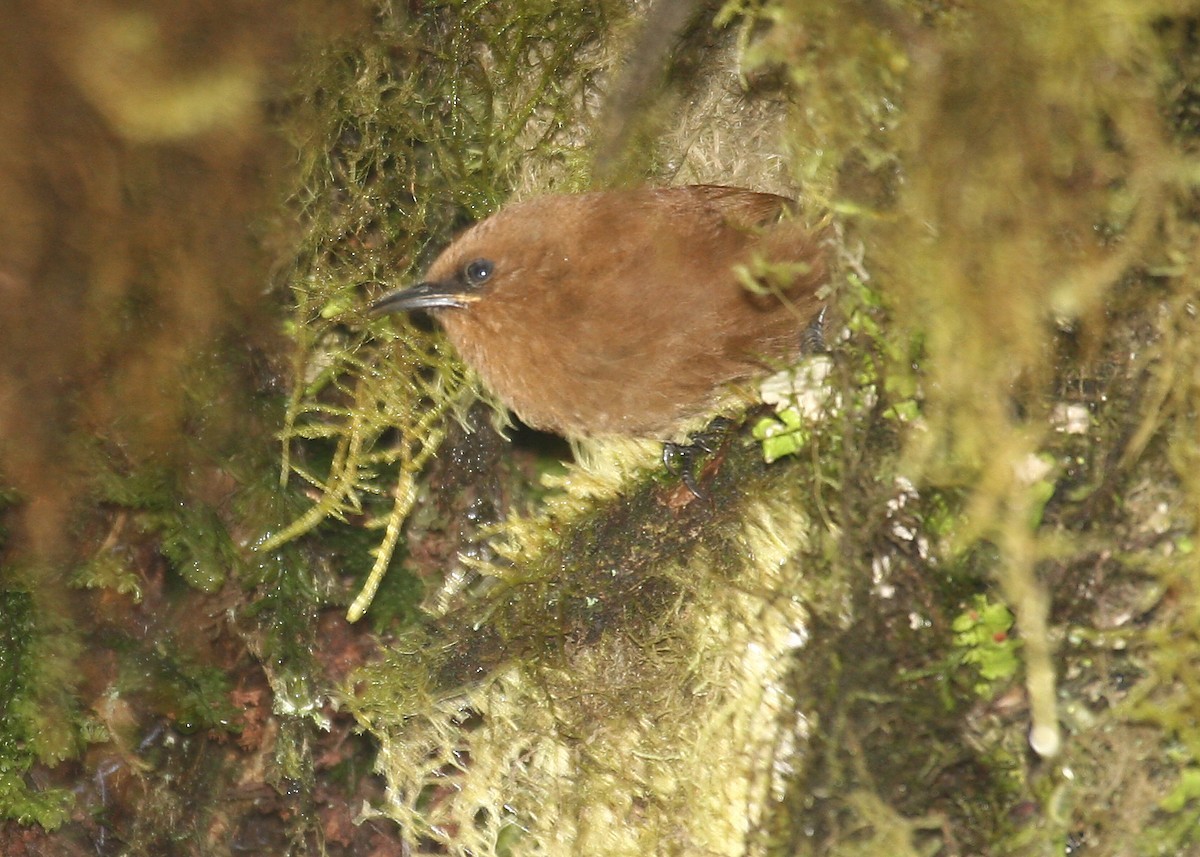Rufous Wren
A species of Sepia-brown wrens Scientific name : Cinnycerthia unirufa Genus : Sepia-brown wrens
Rufous Wren, A species of Sepia-brown wrens
Botanical name: Cinnycerthia unirufa
Genus: Sepia-brown wrens
Content
Description General Info
 Photo By Michael Woodruff
Photo By Michael Woodruff Description
The rufous wren has a length of about 16.5 cm (6.5 in). Birds in most of Colombia and in Ecuador are a uniform dark chestnut-brown colour with slight blackish barring on the wings and tail, though this is difficult to observe in the field. The lores are also blackish. Individuals in northeastern Colombia and in Venezuela are a slightly paler shade, especially on the crown. The rufous wren could be confused with the sepia-brown wren (Cinnycerthia olivascens), but that species is less rufous and has bolder barring on wings and tail. Another similar bird is the rufous spinetail (Synallaxis unirufa), but that species has a longer tail, has no barring on wings and tail and is altogether different in voice and habits. 
Size
16 cm
Nest Placement
Shrub
Feeding Habits
Rufous Wren primarily consumes invertebrates, foraging close to the ground and often flipping over litter to find food. Rufous Wren is sociable, sometimes foraging in mixed-species groups.
Habitat
The rufous Wren is typically found in moist montane forests, including areas where the forest meets open land, as well as in shrub-dominated regions often interspersed with Chusquea bamboo thickets. These habitats span across broader geographical regions characterized by mountainous, wooded environments.
Dite type
Insectivorous
General Info
Feeding Habits
Bird food type
Behavior
The rufous wren is usually found in groups of a few individuals often joining other species of birds in small flocks. It flits about in the undergrowth and is often to be seen in and around clumps of Chusquea mountain bamboo. It has a complex and musical song consisting of repeated notes, trills and short phrases, and often sung in duets with other birds. 
Distribution Area
The rufous wren is found in montane areas of northern Peru, Ecuador, Colombia and southwestern Venezuela at altitudes usually between 2,200 and 3,400 metres (7,200 and 11,200 ft). It occurs in dense undergrowth in tropical moist forests. 
Species Status
The International Union for Conservation of Nature has assessed the conservation status of the rufous wren as being of "least concern". This is because it has a very wide range and is said to be fairly common. It is possible that the population trend is downwards because of the destruction and fragmentation of its habitat, but it is thought not to be declining at such a rate as to justify putting it in a more threatened category. 

 Photo By Michael Woodruff
Photo By Michael Woodruff Scientific Classification
Phylum
Chordates Class
Birds Order
Perching birds Family
Wrens Genus
Sepia-brown wrens Species
Rufous Wren